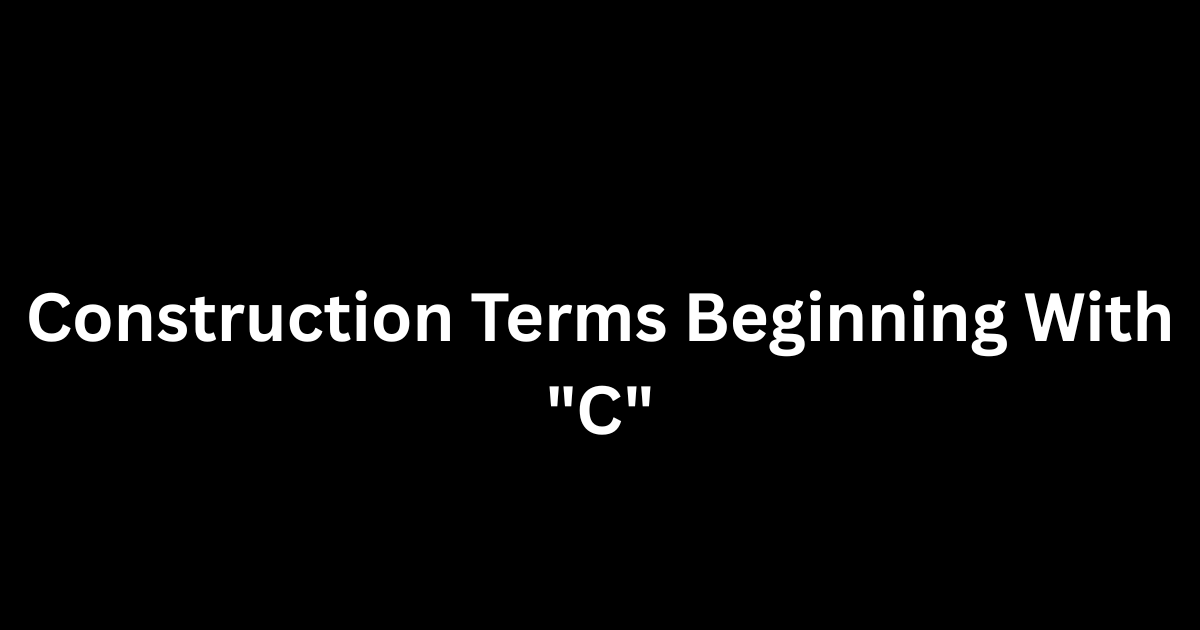
Structural & Architectural Terms
1. Cantilever
Definition: A projecting structural element supported at only one end, creating an unsupported overhang.
Key Characteristics:
- Common in modern architecture for dramatic visual effects
- Requires careful engineering to prevent deflection
- Maximum recommended overhang is 1/3 of the supported length
Applications:
- Balconies and decks
- Roof overhangs
- Bridges and signage supports
2. CMU (Concrete Masonry Unit)
Definition: Precast concrete blocks used in construction, typically 8″ × 8″ × 16″.
Types:
- Standard CMU: Hollow-core blocks
- Split-face CMU: Textured decorative finish
- Lightweight CMU: Incorporating expanded shale or clay
Advantages:
- Fire resistance (up to 4-hour rating)
- Sound attenuation properties
- Cost-effective wall systems
3. Coping
Definition: The protective cap or covering on top of masonry walls or parapets.
Primary Functions:
- Water diversion to prevent penetration
- Aesthetic finishing element
- Protection from weather damage
Common Materials:
- Precast concrete
- Stone (granite, limestone)
- Metal (aluminum, copper)
Construction Processes & Techniques
4. Curing
Definition: The process of maintaining adequate moisture and temperature in freshly placed concrete to ensure proper hydration.
Critical Factors:
- Minimum 7-day curing period (28 days for full strength)
- Ideal temperature range: 50-90°F
- Relative humidity above 80%
Methods:
- Water Curing: Ponding, sprinkling, or wet coverings
- Membrane Curing: Liquid compound application
- Steam Curing: For accelerated strength gain
5. Cut-and-Fill
Definition: The earthmoving process of excavating material from one area (cut) and using it to raise another area (fill).
Engineering Considerations:
- Compaction requirements: 90-95% of Standard Proctor
- Slope stability: Maximum 2:1 (horizontal:vertical)
- Drainage: Must account for water runoff
Equipment Used:
- Bulldozers
- Scrapers
- Graders
Electrical & Mechanical Terms
6. Conduit
Definition: Raceways that protect and route electrical wiring.
Types and Applications:
| Type | Material | Common Uses |
|---|---|---|
| EMT | Thin-wall steel | Commercial exposed work |
| RMC | Thick-wall steel | Industrial applications |
| PVC | Plastic | Underground installations |
| FMC | Flexible metal | Vibrating equipment connections |
Installation Standards:
- NEC (National Electrical Code) requirements
- Minimum bend radii
- Support spacing requirements
7. Chiller
Definition: A mechanical device that removes heat from liquid for HVAC cooling.
Key Components:
- Compressor
- Condenser
- Evaporator
- Expansion valve
System Types:
- Air-cooled
- Water-cooled
- Absorption
Contractual & Project Management Terms
8. Change Order
Definition: A formal document that modifies the original construction contract.
Essential Elements:
- Description of change
- Cost impact (increase/decrease)
- Time impact (schedule changes)
- Approval signatures
Best Practices:
- Document all changes, no matter how small
- Obtain written approval before proceeding
- Maintain a change order log
9. Certificate of Occupancy (CO)
Definition: Official document issued by local government allowing building occupancy.
Inspection Requirements:
- Life safety systems
- ADA compliance
- Mechanical/electrical/plumbing systems
- Final building measurements
Materials & Finishes
10. Caulk
Definition: Flexible sealant used to fill gaps and joints.
Selection Criteria:
| Type | Best For | Lifespan |
|---|---|---|
| Silicone | Wet areas (showers) | 20+ years |
| Polyurethane | Exterior applications | 10-15 years |
| Acrylic latex | Interior paint-grade | 5-7 years |
Application Tips:
- Clean and dry surfaces first
- Use backer rod for deep joints
- Tool for professional finish
11. Cladding
Definition: Exterior material attached to a building’s structural frame.
Common Systems:
- Rainscreen: Ventilated air space
- Curtain wall: Aluminum-framed glazing
- EIFS: Synthetic stucco system
Performance Factors:
- Weather resistance
- Thermal movement
- Maintenance requirements
FAQs: Construction “C” Terms Explained
Q: What’s the difference between curing and drying concrete?
A: Curing actively maintains moisture for chemical hydration (28 days), while drying refers to moisture evaporation before finishes can be applied.
Q: When would you use a cantilever design?
A: When site constraints prevent conventional supports, for architectural statements, or to span obstacles without intermediate supports.
Q: How are change orders calculated?
A: Typically include direct costs (materials/labor) plus overhead/markup (usually 10-15%), and documented schedule impacts.
Conclusion & Next Steps
This comprehensive guide to construction “C” terms provides professionals with the precise language needed for:
- Accurate specifications
- Clear contract documents
- Effective job site communication
- Proper installation techniques
Continue Building Your Knowledge:
- Bookmark this guide for quick reference
- Explore our previous glossaries (A & B terms)
- Stay tuned for “D” terms coming next

